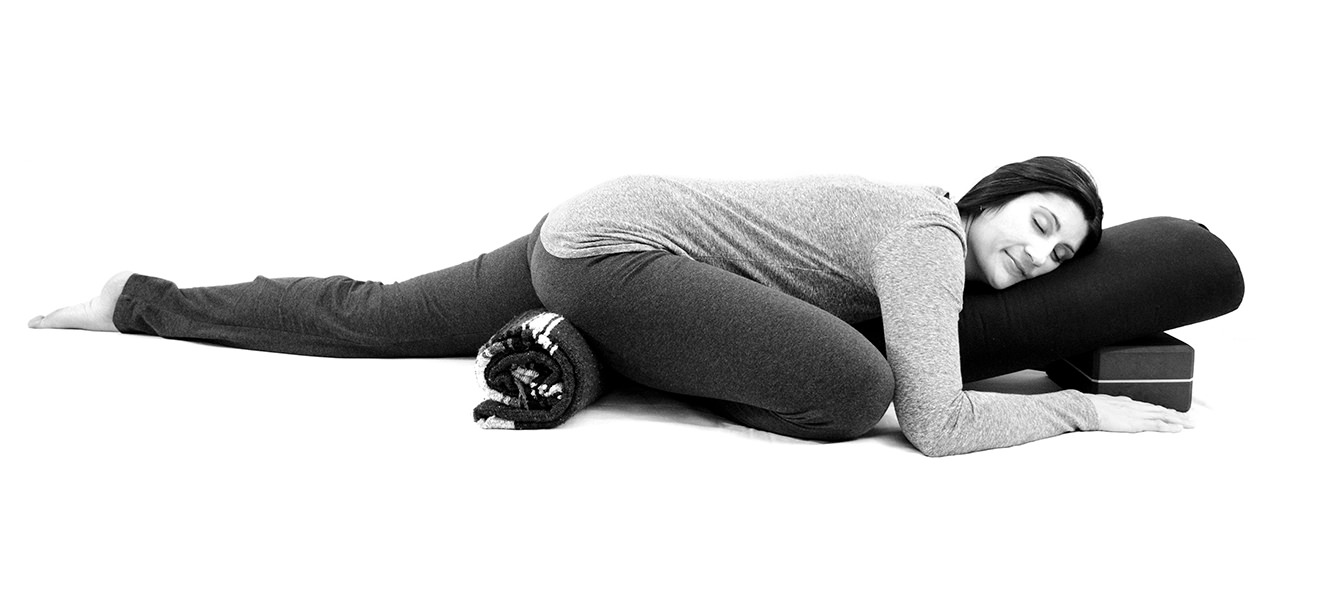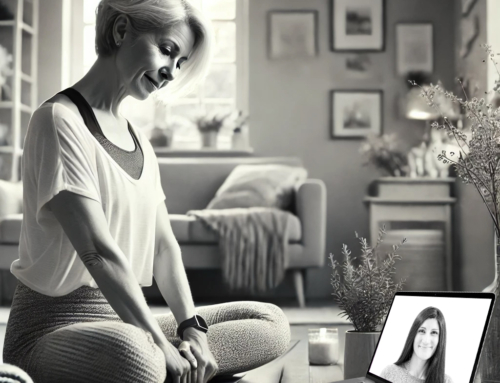Yoga for office workers
This supported hip opener is ideal yoga for office workers to help relieve built-up tension in the hips from sitting for long periods of time. Most of us, especially women, store emotions in the hips. When we stretch this area with a longer hold, we essentially clear out stagnation in this emotional storehouse, releasing what we are ready to be free of.
This is a powerful pose that opens the hips and backs of the legs. It relieves tension in the low back, tightness in the piriformis muscle and eases sciatic nerve pain. It’s ideal to counter pain from piriformis syndrome.
While practicing this pose, the energies of the first chakra—the root chakra—and the second chakra—the sacral chakra—are cleared. Connection to health, vitality, feelings of safety, establishing trust in the world, finding stability and manifesting prosperity are restored as you open the root chakra energy.
Emotional intelligence is enhanced. Healthy boundaries can be established, enjoying pleasure in a healthy manner and not resisting change are characteristics that are nurtured as the sacral energies flow freely.
Instruction – supported pigeon pose for office workers
- Starting in Table Pose, place a bolster vertically out in front of you (have extra blankets and a block nearby).
- Draw the right knee to the right wrist and pivot the right foot over to the left as you lengthen the left leg straight back.
- Stay on hands as you center the hips and rest the top of the back foot down on the earth. Hips are level.
- Right heel is close to the groin for less intensity, further away for more intensity.
- Place a blanket roll under both hips to help align hips and add support.
- This pose is a deep hip opener and may be intense. You do not want to be in pain or unable to relax into the stretch, so be honest with yourself about what feels like too much stretch. Also be aware of what is too little stretch. I encourage you to find your edge—the first place of resistance—and breathe there so the muscles release and you gain flexibility.
- Still on hands, take a breath in and lift the waist out of the hips. As you exhale, fold down, resting the torso down on the bolster and turn the head toward the bent knee. Rest the forearms and hands on the earth, softening the shoulders as you exhale.
- Let the bolster hold the weight of the upper body. Adjust the bolster and stack up as many folded blankets (long rectangular fold) or prop the bolster up with a block, as you need to be completely comfortable and able to let go.
- Breathe slowly for 4-7 minutes, depending on desired intensity, each side.
- To transition to the other side: slowly come to hands and knees into Table Pose. Practice Modified Downward Facing Dog, stretching one leg back at a time, or practice Downward Facing Dog and “walk the dog,” releasing compression in the leg. Come back into Table Pose when you are ready and follow the same instruction for the left side.
- To release: slowly come back to hands and knees in Table Pose. Practice Modified Downward Facing Dog, stretching one leg back at a time or practicing Downward Facing Dog and “walk the dog,” releasing compression in the leg. Transition slowly.

My book: Yoga For Low Back and Hip Health
This content is from my book, “Yoga For Low Back and Hip Health.” In it, you’ll find easy gentle and restorative yoga instruction that anyone can do. You’ll be feeling better in no time, without drugs or surgery. No experience needed: it’s perfect for beginners and advanced yogis alike.
What’s in the book?
- Over 200 pages of in-depth and appropriate instruction
43 restorative and gentle yoga poses - 15 practical and unique yoga sequences. Practice at your convenience—no pressure to get to a packed studio class at an inconvenient time!
- Includes over 300 high-resolution images to help you along
Learn more about “Yoga For Low Back and Hip Health.”






